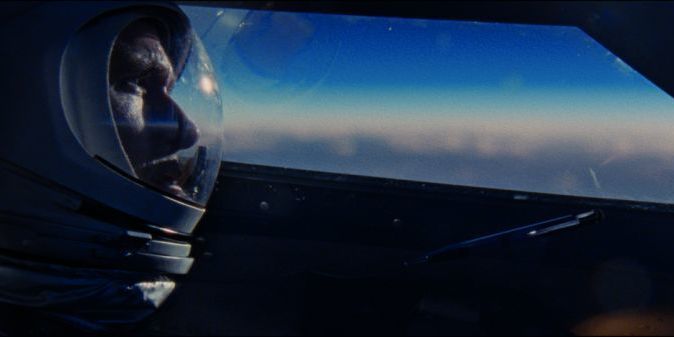As the helmet starts to fog from the condensation of hot breath against metal, and the tinny contraption shudders and groans with fierce intensity, it’s almost possible to imagine the sheer terror of early space travel.
This is how Oscar-winner Damien Chazelle’s First Man opens to an audience of theatregoers in Brisbane’s suburban outskirts: It is intimate; interior; and as much the journey of a man as it is of the moment man first walks on the moon.
The hot breath belongs to space hero Neil Armstrong (played by Ryan Gosling) as he rockets dangerously high above the earth’s atmosphere, at risk of never returning, in one of the earliest examples of space travel.
Armstrong overcomes the shaking metal, the panicked voice via the comms from earth – the black void itself – with the cool head he becomes renowned for.
He uses his engineering skill to right the aircraft and begins to descend through the atmosphere.
In doing so, he has to give-up his ability to steer the ship’s re-entry and landing.
He skids to earth – sweet earth – somewhere in the desert as the technical crews arrive to cool the ship’s engine and chide him for his recklessness.
Although it never feels as though Armstrong is reckless.
If anything, he is exhaustively considered.
Gosling brings a believable and perfectly flawed intensity to Armstrong in the film, in what must be an extremely challenging, interior role.

Armstrong’s near-disastrous opening journey to space is blamed on the distractions taking place in his life outside of work: His three-year-old daughter, Karen, is sick and will soon die.
Armstrong’s refusal to talk about his daughter’s death, to process her loss with his wife Janet (Claire Foy), means he never really recovers.
Instead, he swallows her loss – pushes it deep down - perhaps as many men did in the 1950s and 1960s (and so many still do).
And so he moves through the film as a kind of automaton – seemingly untouched by so much of what happens around him – and yet, so human a cog in this lunar mission.
There are shots of Armstrong playing with his children and moments where he holds his wife as they dance together to the beautiful Lunar Rhapsody, a song that revisits Armstrong during the Apollo 11 landing.
And yet these scenes seem incongruous.
Armstrong is first and foremost a dutiful astronaut: The first man.
It is difficult to watch him avoid having a genuine conversation with his sons about his pending departure on the Apollo 11 mission.
Armstrong is almost emotionally deficient, unable to tell his young boys he loves them even, as he mentally prepares for his journey.

It is frustrating to watch the two worlds that men and women inhabited at this time.
Armstrong has the unquestioned freedom to pursue the moon landing with his male colleagues and confidants, while his wife carries the emotional load at home.
As the men continue the space race – and the movie captures the Cold War climate so well – it is the women in the background who carry so much of the baggage left behind.
The women weather tragic accidents and loss; family dramas and even anti-NASA sentiment.
The film chronicles the rapid evolution of the technology and ships used to send man to the moon over the decade leading up to the Apollo 11 mission.
The music that scores the moon landing itself is atmospheric and brilliant: A surging, thrilling accompaniment to a tense, tightly-orchestrated production.
Armstrong’s famous line is powerful but needs no cinematic embellishment.
Face obscured by the reflective coating of his helmet, he casts his daughter’s bracelet into one of the moon’s many crevices.
Safely back on earth, he is quarantined for a month.
A glass panel separates him from his wife, and in turn the rest of the world, in the final scene.
Armstrong remains private and unknowable right to the end.